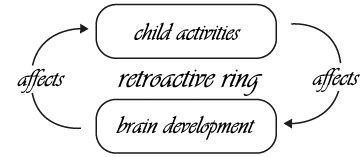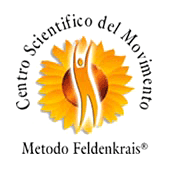
KINESTHESIC way
KINESTHESIC way
This way learning under our will, if correctly stimulated, allow us to recover our lost functions. There are interactions between childhood activities and brain development. The relationship represented in the following diagram, highlighted by arrows in the opposite direction, indicates that one influences the modifications of the other, in which, cause and effect, are continuously reversed in place in a retroactive loop precisely because the effect returns to act at backward on the cause that determined it.
